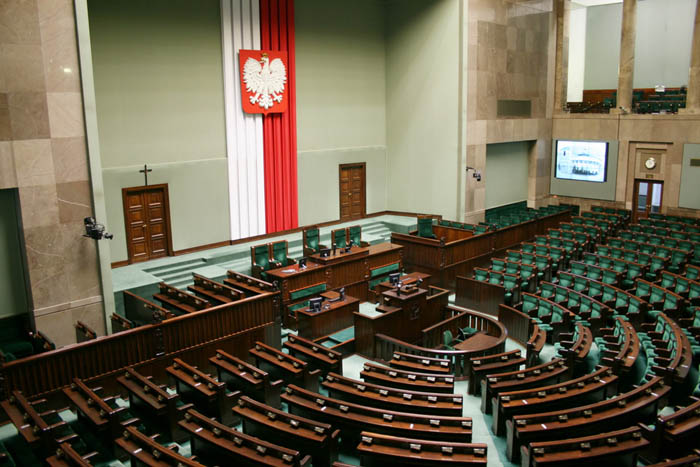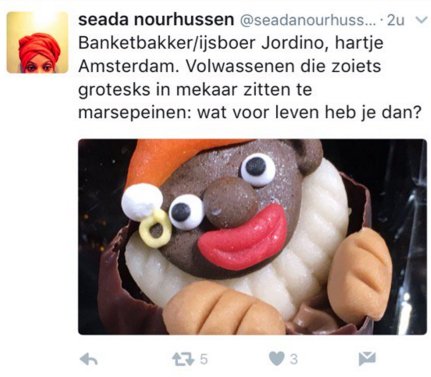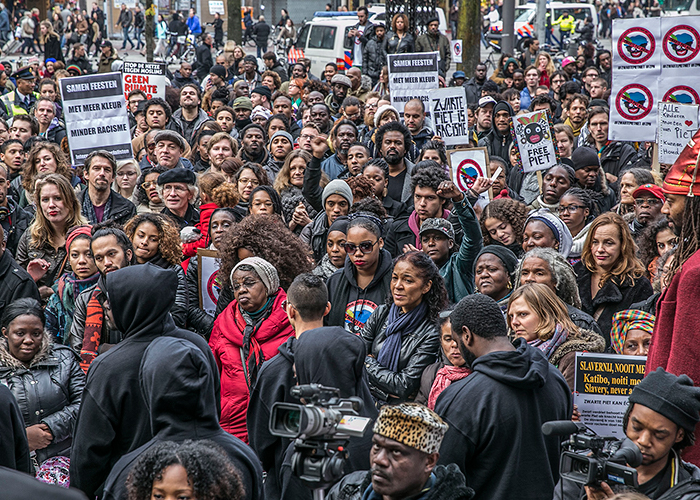16 Jan 2017 | France, Greece, Mapping Media Freedom, News, Russia, Turkey, Ukraine
[vc_row][vc_column][vc_single_image image=”81193″ img_size=”full”][vc_column_text]Each week, Index on Censorship’s Mapping Media Freedom project verifies threats, violations and limitations faced by the media throughout the European Union and neighbouring countries. Here are five recent reports that give us cause for concern.
A Hatay court issued a detention order for Ceren Taşkin, a reporter for the local newspaper Hatay Ses, on the basis of her social media posts, news website Gazete Karinca reported.
Taşkin was detained earlier for “spreading propaganda for a terrorist group” via her social media posts. Taşkin was arrested and sent to prison on 12 January on the same charges.
Her arrest brings the number of journalists in prison to 148, Platform 24 reported.
The National Radio and TV Council has banned independent Russian television channel Dozhd from broadcasting in the country.
“The channel portrayed the administrative border between Crimea and Kherson region as the border between Ukraine and Russia,” national council member Serhiy Kostynskyy said during a council meeting, Interfax-Ukraine reported.
According to Kostynskyy, the channel repeatedly violated Ukrainian law in 2016 by broadcasting Russian advertising and having Dozhd journalists illegally enter annexed Crimea from the Russian Federation without receiving special permission.
The ban is set to be officially published by the authorities on 16 January, Interfax-Ukraine reported.
Dozhd Director Natalya Sindeyeva said that the channel is broadcasting through IP-connection without direct commercial advertising in Ukraine and follows the Russian Federation law requiring that media outlets use maps to show Crimea as part of Russia.
Dunja Mijatovic, media freedom representative at the Organization for Security and Cooperation in Europe, wrote on her Twitter that this decision is “very damaging to media pluralism in Ukraine.”
Police arrested Giannis Kourtakis, publisher of Parapolitika newspaper, and its director, Panayiotis Tzenos, following a lawsuit filed against them for libel and extortion by the defence minister and leader of the Independent Greeks Party (ANEL), Panos Kammenos, the news website SKAI reports.
Kourtakis said he voluntarily went to police headquarters after being informed about the lawsuit, while director Panagiotis Tzenos was arrested in his Athens office.
ANEL issued a statement stressing that the lawsuit was prompted by allegedly slanderous claims about Kammenos’s son, saying that he was an “anarchist” and involved in a terrorist group on their radio programme which aired on 9 January.
In July 2015, Kammenos gave Athens press union (ESIEA) a list of journalists who had allegedly received improper funding through advertising from the state health entity KEELPNO, which included the Parapolitika executives.
According to SKAI, Kammenos claims that the journalists made slanderous statements about his son in order to make him retract allegations that the Parapolitika executives were receiving funding.
The public prosecutor who investigated the lawsuit has since reportedly dropped charges of criminal extortion.
Greece’s main journalists’ union and opposition parties have expressed concern over the general tendency of police’s interventions to journalists’ offices.
“Journalism must be exercised according to specific rules, but also press freedom must be defended and protected,” the Journalists’ Union of the Athens Daily Newspapers writes in its statement.
Vladislav Ryazantcev, correspondent for the independent news agency Caucasian Knot, reported on Facebook that he was assaulted by five unknown individuals whose faces were covered by scarves.
According to Ryazantcev, one of them grabbed his hand and asked him to “follow him for a talk.” Right after that an additional four individuals came up and started to hit the journalist on the head.
Ryazantcev reported that bystanders then helped rescued him.
“I do not know what the attack is connected to,” he wrote on Facebook. He later filed a complaint to the police.
The day before on 9 January, Magomed Daudov, speaker of the Chechen parliament, published threats against editor-in-chief of the Caucasian Knot, Grigori Shvedov, on Instagram.
A TV crew working for TF1 channel was reportedly assaulted in Compiègne while trying to film a building set to be emptied of its inhabitants because of alleged high criminality linked to drug trafficking, Courrier Picard reported.
“We tried to film a story there this morning. Our crew was attacked and stoned by thugs who stole our camera in this unlawful zone. It was very violent,” TF1 presenter Jean-Pierre Pernaud said. The assault occurred in the Close des Roses neighbourhood.
One of the journalists told Courrier Picard that the channel would file a complaint.[/vc_column_text][vc_column_text]
Click on the bubbles to view reports or double-click to zoom in on specific regions. The full site can be accessed at https://mappingmediafreedom.org/
[/vc_column_text][/vc_column][/vc_row]
23 Dec 2016 | Europe and Central Asia, Mapping Media Freedom, News, Poland
[vc_row][vc_column][vc_column_text]

The Sejm of the Republic of Poland, the lower house of the Polish parliament.
Poland’s ruling Law and Justice Party (PiS) has had a lot to celebrate in recent months. Just three days after the country’s 98th Independence Day, PiS celebrated one year in office on 14 November. The party, which has a majority in the Sejm, has had a largely free hand in making the “good changes” it had promised in its infamous electoral slogan.
These changes have included making the Polish constitutional court “submissive”, dismissing hundreds of journalists from the newly patriotic national – but no longer public – media, introducing limitations to the right to assembly and extending the state’s power of surveillance.
Last January, the surveillance act added powers to the country’s foreign secret services and the police by allowing them to tap into a wide range of telecommunications details completely unchecked. Ironically, the reform was first prompted by the constitutional tribunal, which, in 2014, had ruled the then-surveillance laws to be unconstitutional. With particular relevance to journalists and media workers, it recommended that those with a right to professional confidentiality could only be under surveillance after court approval.
Far from incorporating these and other recommendations of Poland’s highest court into the surveillance reform, PiS allowed for all broadband lines to be tapped into directly without judicial oversight or the possibility for internet service providers to request more details as to the reasons for such activities.
Wojciech Klicki from the Polish anti-surveillance foundation Fundacja Panoptykon which is run by lawyer activists, told Mapping Media Freedom that the “most important issue has always been the lack of an institution that would check whether intelligence services are acting in accordance with the law” and that was only made worse through the surveillance act.
The anti-terrorism act which came into effect in late June enables unchecked surveillance of foreign nationals once the ABW — Poland’s internal security agency — establishes their possible ties to terrorism. It also allows for websites to be blocked for five days without prior judicial consent and up to 30 days thereafter, should they be deemed to disseminate terrorist content.
Klicki said: “This has enormous implications for media freedom. Fundamentally, the laws do not offer a precise delineation as to what constitutes a ‘connection to an event of terrorist character’. Such a connection may be an article reporting on an event. And the definition is very broad, not only including obvious events like a bomb attack but other common crimes, which were committed with the aim to direct public authorities towards a certain decision, for example through bribery.”
Klicki noted that a five-day ban of a website can mean its demise in times of fast data, as such an incident is likely to result in a withdrawal of advertisers.
As part of its campaign against the law, Fundacja Panoptykon set up a petition and took part in a public consultation specifically for NGOs and activists with the governmental human rights representative Adam Bodnar. Indeed, Polish authorities are hard-pressed to justify the severity of the law due to the country’s very low terrorist threat – in April, the British Foreign Office, stressed the danger of driving a car in Poland while emphasising the terrorist threat there was negligible compared to the European average. Aside from a “tiny tweak of the definition for the ‘event of terrorist character’” as Klicki noted, the law was enacted within two months of its announcement in late April, and ratified by the president, Andrzej Duda, on 22 June.
Of course, journalists can’t be immune from surveillance by their own country or foreign secret services and Polish journalists have had their fair share of encounters with their domestic Anti-Corruption Bureau (CBA). The Gazeta Wyborcza journalist Bogdan Wróblewski won a case against the Bureau in 2013 which consequently had to apologise to him for tapping his telecommunication billings. The CBA’s reason for its ambitious investigation, it emerged during the trial, was to uncover Wróblewski’s and several other regime-critical journalists’ sources. The events took place under the former PiS government term.
Klicki assesses that the recent anti-terrorism laws only exacerbate the problem, especially for foreign journalists. Due to the changes, “journalists can have huge trouble to manage to adhere to their professional confidentiality in Poland”. Asked how Polish journalists make sure they are able to protect their sources, Klicki says they were “now becoming aware of how necessary it is to increase their know-how in the realm of secure communication”, by attending workshops on anonymity, which are offered by his foundation. There is also more information on secure communication online specifically for fixers.
The human rights representative Bodnar submitted the anti-terrorism law to the constitutional tribunal. However, the tribunal has effectively lost its status as an institution of checks and balances though the numerous legislative changes over the past year. Former judge of the tribunal, Andrzej Zoll, commented: “This is the end of a democratic rule of law.”
Click on the bubbles to view reports or double-click to zoom in on specific regions. The full site can be accessed at https://mappingmediafreedom.org/
[/vc_column_text][/vc_column][/vc_row][vc_row][vc_column][vc_basic_grid post_type=”post” max_items=”4″ element_width=”6″ grid_id=”vc_gid:1481910799662-a9a879ef-f11e-7″ taxonomies=”6632″][/vc_column][/vc_row]
20 Dec 2016 | Mapping Media Freedom, News

Each week, Index on Censorship’s Mapping Media Freedom project verifies threats, violations and limitations faced by the media throughout the European Union and neighbouring countries. Here are four recent reports that give us cause for concern.
11/12/2016 — A photographer for Kommersant newspaper was attacked by anti-LGBT protesters and then harassed by the police. David Frenkel was in St. Petersburg observing an LGBT rights protest and a counter-protest with demonstrators said to belong to the ultra-conservative People’s Liberation Movement (NOD).
Frenkel was attacked by a NOD protester who hit his camera and kicked him. The photographer requested help from nearby police officers but they ignored him. He then phoned the police who arrived at the scene but did not protect him. Instead, the counter-protesters claimed the journalists were disrupting their protest and the officers took Frenkel to the police station along with the demonstrator who attacked him.
Frenkel was accused at the police station of “disrespecting the state and the police”. An officer refused to process his assault complaint against the demonstrator and threatened to report him as mentally ill.
Doctors arrived in an ambulance shortly after, attempting to remove the journalist, which he resisted. The doctors then took the bag containing Frenkel’s camera to which he said, “You have to kill me before you take this bag,” when the doctors replied, “No problem”.
As Frenkel screamed and called for help, surrounding officers took videos of him and laughed. The doctors removed him from the room so he was no longer under surveillance cameras when one started strangling him and the other began tying his hands in a tourniquet.
Frenkel said in a Facebook post, “While doing this, doctors, police officers, and the NOD representative were laughing about me being Jewish; they mocked something about Seder and circumcision…”
Frenkel was released a short time later. Kommersant filed a complaint with the Russian Investigative Committee, demanding an investigation.
10/12/2016 — Taulant Balla, MP for the ruling socialist party in Albania, has suggested changes to the country’s electoral code would would force registration for all online media outlets and give permission to the government to ban all unregistered outlets.
The outlets would have to register under a Media Monitoring Board, which is a temporary body created by the Central Electoral Commission to monitor the TV time allocated to candidates during a campaign. If these outlets were to fall under “electoral propaganda” during elections, then they would be forced to close down.
The proposal states that, “State authorities take measures to close during the election campaign unregistered web outlets who distribute electoral propaganda, carry out polls disregarding the electoral code or go beyond limits of information and are deemed electoral propaganda.”
12/12/2016 — A representative of the British Journalists Union, Alexander McDonald, was denied a visa to enter Turkey to cover the court cases of Evensrel reporters.
McDonald received an email saying his visa was denied but was given no reason. Without the visa, McDonald will not be able to cover the cases against journalists Cemil Ugur and Halil Ibrahim Polat. Since McDonald has been denied, the journalists have been released. They were originally detained for “armed terrorist propaganda” and “membership of an armed terrorist organisation”.
12/12/2016 — Several non-state news outlets reported interruptions to their services and have noticed them occurring for the past several weeks. Since 28 November access to the websites for Radio Free Europe/Radio Liberty and Voice of America was blocked repeatedly.
Meydan.tv and another news outlet based in Berlin experienced the same problems between 28 November and 2 December.
Click on the bubbles to view reports or double-click to zoom in on specific regions. The full site can be accessed at https://mappingmediafreedom.org/
19 Dec 2016 | Europe and Central Asia, Mapping Media Freedom, Netherlands, News
[vc_row][vc_column][vc_column_text]
Volkskrant columnist Harriet Duurvoort had received threats before. She often questioned the racist elements of Black Pete (Zwarte Piet) in her columns. Black Pete, a black-faced children’s character, is part of the annual Dutch feast of Saint Nicolas (Sinterklaas) celebrated every 5 December.
The threats usually came through social media. But this time it was different.
It was early December 2015. Her phone rang. There was a male voice on the other end of the line. Before she could ask who he was and how he got her number, the man started shouting at her. He called her a “bitch” and told her to keep her hands off of “our Black Pete”. His rant lasted less than a minute, Duurvoort recalled. “It was terrifying,” she said. “This wasn’t just Facebook or Twitter. This man got hold of my personal phone number, and made an effort to phone me up.”
Duurvoort’s weekly column runs in one of the biggest Dutch dailies, De Volkskrant. That week she had published a commentary for the New York Times – titled Why I changed my mind about Black Pete – in which she described how she experienced Black Pete as a child of Suriname descent. Duurvoort knew her article would stir tension and it was shared widely on social media. “It defines the climate surrounding the Black Pete debate in which we find ourselves,” she said.
For years the character of Black Pete has been causing heated debates in The Netherlands. An activist group collectively using the slogan “Black Pete is racist” began campaigning in 2011. The group aims to change the Dutch perspective on the black-faced character with which Dutch kids had been growing up for decades. But the pledge to change the Black Pete tradition has met with much resistance. Many Dutch citizens consider Black Pete an essential part of their culture and childhood memories and they don’t want to see it changed.
The United Nations committee on the Elimination of Racial Discrimination urged The Netherlands in 2015 to get rid Black Pete because it has racist elements. “Black Pete is sometimes portrayed in a manner that reflects negative stereotypes of people of African descent and is experienced by many people of African descent as a vestige of slavery,” their report stated. The UN urged the Dutch authorities to work on the elimination of racial stereotyping.
A few Dutch cities, schools and TV broadcasters have already reinvented Black Pete by changing the character’s colour and removing it’s big red lips and golden earrings, calling it Pete instead of Black Pete. But the public debate remains fierce. Protest groups in favour of and against Black Pete have clashed on several occasions. People who speak out in the media about the racist elements of the character are increasingly facing threats from Black Pete supporters, mostly through social media.
The well known TV presenter and now politician Sylvana Simons has been subject to a storm of threats ever since she became publicly vocal about Black Pete and racism. A photo-montage of her face in a video showing lynched bodies was shared on social media earlier this year. A popular radio DJ played monkey sounds on his national radio show, saying that Simons should “be quiet,” which created a huge row in Dutch media.
In November this year, the Dutch special Children’s Ombudsman, Margrite Kalverboer, received dozens of death threats by email after she’d published a report on the matter, stating that the Dutch must change the Black Pete tradition because it contributes to bullying and discrimination of black children.
Journalists experience similar threats when writing or tweeting their opinions about Black Pete. Seada Nourhussen, a Dutch-Ethiopian journalist for daily Trouw, saw her Twitter timeline fill up with roughly a hundred hate tweets after she’d posted a photo of little black-faced marzipan pastries being sold at an Amsterdam bakery on 13 November 2016. “Adults who bake these, what kind of a life do they have?” she wrote below a picture she had received from a friend.
“I’m a columnist in a free country without censorship where tensions do sometimes rise high. It’s not easy sometimes”
“It was a nasty, violent, sexsist, racist and Islamophobic mayhem,” she told Mapping Media Freedom. “My whole timeline was filled with mostly angry white men who wished me dead and called me names.” Nourhussen spent hours on blocking and reporting accounts from people who’d threatened her to Twitter. “It lasted for about a week, every day, and then it stopped”, she said. She said she also reached out to Twitter and the police, but neither responded to her.
The hate storm against her started after right-wing politician Martin Bosma (PVV) had reposted a screenshot of her tweet to his thousands of followers. Nourhussen had by then already deleted the tweet. She didn’t want to derail the racism debate towards Dutch bakeries, she said. The popular right-wing weblog GeenStijl republished Bosman’s screenshot in a tendentious article about another bakery in Amsterdam which removed black-faced cakes after someone had sprayed ‘You are racist’ on it’s window, indirectly blaming Nourhussen for it.

Nourhussen is an Africa-editor at Trouw’s foreign news desk. She does not write about the Black Pete controversy for the newspaper and her tweets represent her personal opinion. But she does think being a journalist might make her an easier target for people who are intended to send out hate tweets. “When you have my profession, and also belong to a minority group in a western country, and on top of that being a woman and having an Arabic sounding name, you’re aware that you’re not entitled to express your opinion without consequences”, she said.
It didn’t change the way she writes or tweets, she added. “I’m not afraid,” she said. “Angry is a better description of how I feel”. Nourhussen is disappointed in her colleague journalists at other newspapers and broadcasters who ran the story about her tweet only from the perspective of victimising bakeries that are selling Black Pete pastries, like daily Telegraaf and regional Amsterdam broadcaster AT5. “I’m ashamed to call those reporters my colleagues because they did a terrible job”.
Nourhussen and Duurvoort are not the only ones. The African-American documentary filmmaker Roger Williams who produced the documentary Blackface: Dutch holiday tradition or racism? for CNN in November 2015, also received death threats from Dutch citizens. “I clearly touched a nerve here,” he said in the Dutch TV talkshow RTL Late Night. Among other things he was called “black ape” in emails he’d received. He said that he was astonished by the reactions to his documentary about Black Pete and racism in The Netherlands. “The Dutch are clearly not aware that the black community in The Netherlands is not happy with Black Pete,” he said.
Several incidents with journalists have taken place during Black Pete street protests this year. On 12 November 2016 a reporter for the broadcaster PowNed, Dennis Schouten, was assaulted during a demonstration against organised by activist group Kick Out Zwarte Piet (Kick out Black Pete). Schouten was interviewing protesters when one of them, an anti-Black Pete protester, pushed him onto a moving car. He wasn’t injured and the perpetrator was arrested.
On 26 November Dutch-American journalist Kevin P Roberson was assaulted while reporting on another demonstration against Black Pete in the city of Utrecht. Roberson, owner of the online news portal The Roberson Report, was hit on the head by a Black Pete supporter while he was filming the protest. Roberson had been threatened before, and he’s told Mapping Media Freedom that he fears for his safety. He said that his home address and car license plate number is circulating on right-wing social media groups. “I don’t feel safe anymore,” he added. “I don’t know if I’d risk covering another Black Pete protest to be honest.”
The Dutch Union for Journalists condemned both attacks.
The day that Volkskrant columnist Duurvoort received that threatening phone call, she felt unsafe in her own house. At the time, she contacted the police, but they had told her there was not enough information to start an investigation. A year later she’d rather not think about it too much anymore. And it did not stop her from writing about the controversy surrounding Black Pete.
“I’m a columnist in a free country without censorship where tensions do sometimes rise high. It’s not easy sometimes,” she said. “But it is also part of my job.”
Click on the bubbles to view reports or double-click to zoom in on specific regions. The full site can be accessed at https://mappingmediafreedom.org/
[/vc_column_text][/vc_column][/vc_row][vc_row][vc_column][vc_basic_grid post_type=”post” max_items=”4″ element_width=”6″ grid_id=”vc_gid:1482144241975-569ee181-a8c8-3″ taxonomies=”6664″][/vc_column][/vc_row]




